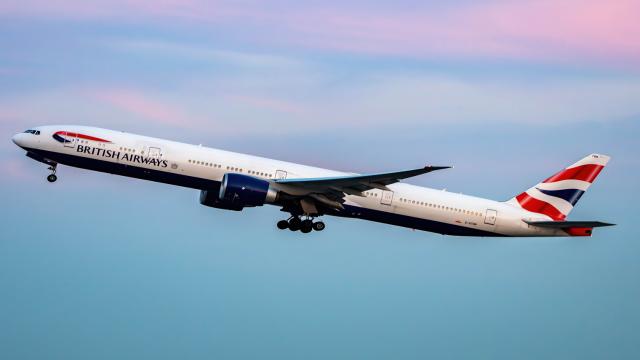The aviation industry is known for its vast array of acronyms, but one that often goes unnoticed is ETOPS. While most travelers have likely flown on an ETOPS aircraft without realizing it, this acronym holds great significance in the aviation world. ETOPS stands for “extended-range twin-engine operational performance standards” or, as some in the industry humorously refer to it, “engines turn or passengers swim.” This abbreviation is used to describe aircraft that have limited options for landing, particularly those flying over oceans.
A Peek into the Past
Historically, twin-engine aircraft were subject to the 60-minute rule, meaning they had to operate within a 60-minute diversion area. To fly long distances over water, these aircraft needed an ETOPS rating. This certification ensures that the plane possesses adequate communication systems, redundancies, and a fire suppression system to enable safe flight in the event of engine failure.
To meet the demand for profitable operations on long-haul routes, manufacturers introduced quad jets, larger aircraft with considerably higher fuel consumption. However, these aircraft received limited orders as airlines needed to ensure they were consistently filled. Consequently, airlines were only permitted to operate a single daily flight on high-demand routes such as New York to London or New York to Paris to maximize occupancy. The iconic Boeing 747 was the primary aircraft flying between the United States and Europe during the 1960s and 70s, operating under these constraints.
However, airlines desired the ability to fly non-stop routes between smaller cities, necessitating smaller aircraft with Atlantic-crossing capabilities. This led to the creation of three-engine planes, known as tri-jets, which were exempt from the 60-minute rule. Notably, these aircraft required different maintenance rules for mechanics and were equipped with additional life rafts within the cabin roof.
ETOPS Ratings: A Journey of Evolution
The rule governing ETOPS was developed in the 1980s and has played a pivotal role in shaping commercial aircraft development. In 1985, Trans World Airlines (TWA) became the first airline to receive permission to operate their Boeing 767 aircraft on a route from Boston to Paris.
Initially, the Federal Aviation Administration (FAA) granted an ETOPS certification rating of 120 minutes. This meant that twin-engine aircraft could not fly more than 120 minutes away from the nearest suitable airport in case of an emergency landing. Subsequently, increased confidence in engine and aircraft reliability prompted the FAA to extend the diversion period to 180 minutes in 1988. This new regulation allowed aircraft with an ETOPS 180 rating to operate anywhere as long as they remained within 180 minutes of a diversion airport suited for their needs.
However, airlines with ETOPS-rated aircraft had to fulfill other requirements, such as having a special cabin and flight crew, a unique maintenance plan, specialized dispatchers, specific passenger recovery plans, and modified fuel quantities. Boeing’s introduction of the 777 in 1990 marked the debut of an aircraft with an ETOPS rating of 180 upon entering service.
The Joint Aviation Authorities (JAA), the European aviation authority, subjected the Boeing 777 to an ETOPS rating of 120, necessitating European carriers to demonstrate a “trouble-free” experience before obtaining a 180-minute ETOPS rating for this aircraft.
Over the years, ETOPS ratings continued to evolve. In 2007, the FAA enabled twin-engine aircraft operations registered in the United States to increase their rating to 180 ETOPS. The Airbus A330 became the first aircraft to receive ETOPS-240 approval in 2009. Subsequently, the FAA granted Boeing’s type design, equipped with GE engines, an impressive ETOPS rating of 330 minutes for extended operations in 2011.
In 2015, Air New Zealand accomplished a significant milestone by operating the first ETOPS-330 flight between Auckland and Buenos Aires using a Boeing 777-200 ER. The Boeing 787 also received an ETOPS 330 rating in May 2014, allowing LAN Airlines to replace the Airbus A340 with the Dreamliner on its Santiago to Sydney and Santiago to Auckland routes. Prior to the entry into service of the Airbus A350XWB in 2015, aircraft were typically assigned an ETOPS rating of 180 minutes in North America and Europe. Notably, the A350XWB became the first aircraft to receive a striking ETOPS rating of 370 from European authorities before entering service. In the same year, the Boeing 747-8 Intercontinental aircraft achieved an impressive rating of 330, making it the first four-engine aircraft to receive such recognition.
The Era of Small Planes and Big Oceans
Thanks to ETOPS, twin-engine aircraft like the Boeing 757 and the Airbus A321neo are now seen operating on transatlantic routes between the United States and Europe. This dynamic has enabled airlines to fly long and slender routes using smaller planes, connecting smaller cities that were previously inaccessible. For example, Aer Lingus currently operates daily flights between Hartford, Connecticut, and Dublin, Ireland, utilizing an Airbus A321neo.
While there are instances where ETOPS-certified routes have ceased operation, such as Air Canada’s St. Johns to London Heathrow route, which was previously flown with an ETOPS-certified 120-seat Airbus A319, the impact of ETOPS is undeniable. British Airways once served the New York John F. Kennedy Airport (JFK) to London City Airport (LCY) route using an Airbus A318. Although the eastbound journey was non-stop, the westbound flight included a stopover in Shannon, Ireland, before continuing to JFK. Furthermore, French leisure carrier La Compagnie now operates flights between New York-Newark Liberty and Milan, Italy, with an Airbus A321neo, offering a flight duration of 9 hours and 44 minutes.
ETOPS has revolutionized the aviation industry, allowing small planes to conquer vast oceans and making the world feel smaller than ever before. Through increasingly impressive ETOPS ratings, nonstop flights between destinations have become a reality.
To learn more about aviation topics and stay updated with Ratingperson, visit Ratingperson.

